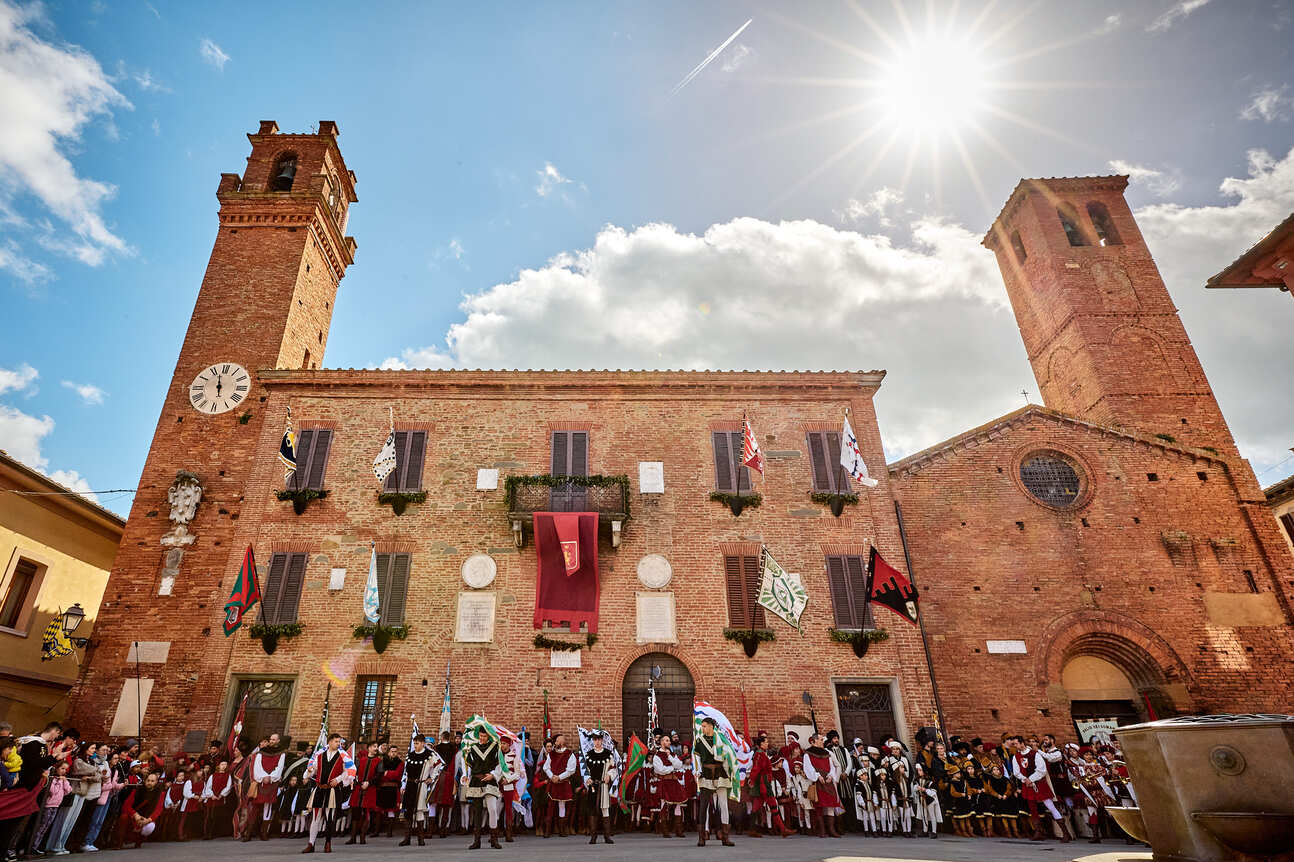By Simone Bandini
We are with the newly elected Councillor for Culture Roberto Trabalzini for our, now customary, appointment with Torrita di Siena: its ancient history, unspoiled nature and the many events that the city associations have been carrying out with enthusiasm, for decades, together with the Municipal Administration. We talk to you, this time, about the New Season of the Teatro degli Oscuri, with the words of the Artistic Director Laura Ruocco – then about the historic Palio dei Somari which will be held, as tradition dictates, at the beginning of spring.
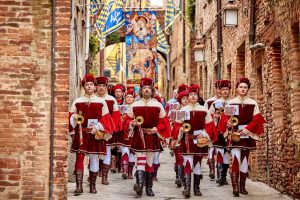
Just recently, the new season of the Teatro degli Oscuri directed by Laura Ruocco was announced, staged by the ‘Compagnia Teatro Giovani Torrita’, which includes nine appointments from 2 November to 9 May. In the limelight, in the small Tuscan village, come established names of Italian theatre, the energy of gospel, events for children and emerging talents. The group, animated by a fervent artistic activity, has been active since 1997 with the declared intention of stimulating and supporting the moral and social growth of the social fabric, promoting the dissemination of art and theatrical culture, with particular reference to musical theatre, of which it has become a territorial and national point of reference.
But we ask directly to the Artistic Director, Laura Ruocco, what it means to work with a company of young people, in a small but passionate reality like that of our medieval village.
VALLEY LIFE: Laura well found, how did the collaboration with the Teatro degli Oscuri in this ‘secret’ corner of Tuscany come about?
LAURA RUOCCO: My adventure as artistic director of the theatrical season of the Teatro degli Oscuri in Torrita di Siena was born, first of all, thanks to the meeting with the Compagnia Teatro Giovani Torrita, which I had met through some of their young members years ago during specialization internships in which I was involved as a teacher. Subsequently, when ten years ago the current mayor and the city council asked the Company to manage the theatre season, the Company thought of proposing me as artistic director and so it all started.
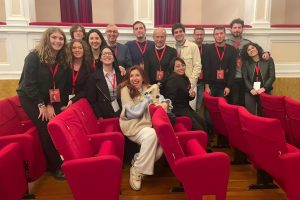
VL: What can you tell us about this new theatrical season? What were the principles that inspired the choice of this new calendar of shows?
LR: Ten years ago my main goal was to ensure that the Theater returned to being a place of belonging and life of the territory. A place where you can meet, where you can spend time together, where you share ideas and emotions. When I arrived, the theatre had 10 subscribers, the shows were mostly empty and with, among other things, a large investment of money; But the thing that struck me most was that that place belonged to no one. Today, fortunately, thanks to the public but also to the serious and constant work of the municipal administration and the Teatro Giovani Torrita company, the goal has been achieved and, consequently, it has already been three years that I have been able to work on the proposal of more varied playbills, with a broader scope, both in terms of the number of the guest company and the complexity of the show on the bill. I always include some proposals aimed at the very young and schools, also with a view to training the public and, in general, I would say that today I have more freedom and means to program, thanks to the trust and support of my clients and the fundamental support of the public. In general, being the only theatre in a small community, I try to propose a varied program that can satisfy different tastes and genres. This year alongside brilliant comedies and well-known names such as that of Chiara Francini, Maurizio Micheli, Matteo Vacca, Gianluca Guidi, there are always ‘younger’ shows such as the one with Manuela Bisanti signed by Massimiliano Bruno; musical performances by the same Compagnia Teatro Giovani; more avant-garde shows also suitable for schools such as ‘Europe does not fall from the sky’ by the Teatro delle Albe in Ravenna. Pippi Longstocking is my proposal this year for younger children. There will also be the Gospel Concert, during the Christmas period.
VL: What is the show that makes you most proud?
LR: Actually, there is no show that makes me more proud, in the sense that all the shows proposed have always been important and worthy of being seen for me. This is regardless of the judgment of the public, because the meaning of the encounter at the Theater is precisely this. A real dialogue with the audience that participates, whether they confirm my choices, whether they don’t find themselves or who are half-convinced. I think that the responsibility of an artistic direction is to know the public and to satisfy them in their desires, but also to amaze them, provoke them and maybe even take them to areas where they would not have gone. This is why I say that I have always loved the proposals I have made because I have always believed in them. Today my real goal, in terms of pride, would be to be able to sell season tickets blind, in the dark. It would mean that the public is aware of the beauty of “that monthly appointment”, considers it an essential habit within their daily life and, moreover, that they do not need to read titles or names, because they know that the proposal would still be of their trust. I know it’s utopian and, on the other hand, no theatre in the world does it… but who knows, maybe tomorrow we may be the first!
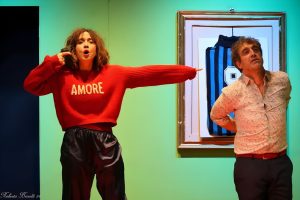
Let’s now move on to the event par excellence of Torrita, ‘Il Palio dei Somari’, which for years has aroused and renewed the competition between the eight districts of its territory: Porta a Pago, Porta a Sole, Porta Gavina, Porta Nova, Cavone, Le Fonti, Refenero and Stazione. Days divided between crafts, gastronomy and folklore – which culminate in the long-awaited moments of the Palio itself and the famous Historical Parade.
It was the year 1966 and then it was decided to celebrate the great tradition of wood with an event worthy of this city wisdom: thus began a festival inspired by the simplicity, dexterity and tenacity of craftsmanship – whose godfather could only be St. Joseph with his donkey.
Today the challenge between the districts is heated – and it is a work that engages the whole town, all year round: “The silence that precedes the beginning of every career, the eyes of the public focused on the advance of the donkeys on the tuff, the hope of the most passionate ‘contradaioli’ to see their Contrada triumph in a dispute that admits only twists and turns”. The eight donkeys assigned by draw to the Contrade, ridden by their respective jockeys, take part in the career.
Precisely because of the unpredictability and nature of the donkeys, the race is difficult to interpret – and it is rather difficult to make predictions. A distinctive feature of this competition that makes it fascinating, in the ancient way: “The tension remains high until the end of the race, when the first donkey completes the four laps of the track necessary to win the Palio, the coveted painted banner, immediately entrusted to the winning Contrada and carried in triumph from it to its headquarters”, says President Massimo Bolici. The historical parade is instead a journey into the fifteenth century, where each figure finds his or her rightful place in a scenic parade through the streets of the village where modernity is suspended and you go back in history with the armigers, lords and ladies of the past: “The procession characterizes the entire event and is a source of pride for the people of Torrita and the Contrade, for the refinement with which all the details of the clothes worn on the catwalk are taken care of”.
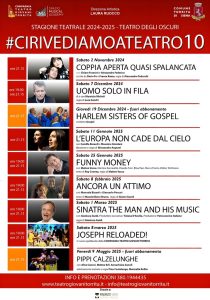
VALLEY LIFE: President, what does this city festival mean for the village of Torrita? A value that certainly goes beyond the sporting or folklor
ic data, right?
MASSIMO BOLICI: It is certainly an important tradition for our territory, a heritage to be valued and preserved. The Palio unites an entire community, not only for the days of the festival, but for the entire year: the youngest boys and girls, in fact, thanks to the school of the Flag-wavers and Drummers Group meet weekly to prepare for the event, waving flags and playing drums. The districts live the festival throughout the year and the preparation for the Palio involves and unites large and small contradaioli. The historical parade then, the spearhead of the event, keeps many people always active to allow their district to parade and wear their colours, with great pride. We have the obligation to pass on this tradition and these values to the little ones.
VL: The donkey, an animal certainly well present in our imagination. What is being done to protect and enhance it, beyond its competitive function in the Palio?
MB: The donkey, a strong and stubborn animal, is protected by the Association with a strict race regulation: in fact, there are sanctions and disqualifications for jockeys who rage on the animal by beating it on the neck, head, or ears with punches or kicks, or voluntarily pulling its hair. Basically, the jockey must respect the animal and must only guide it to victory, with respect for the animal and for the party itself. Precisely to enhance it and to give it the importance it deserves, on the Sunday before the Palio, the donkey is the protagonist of ‘Somarando’: the exhibition that takes place in the gardens adjacent to the historic centre, dedicated to our animal, where children and not only, will have the opportunity to spend moments with the animal to get to know and appreciate it.
VL: What will be the date of the next edition? A somewhat complex calculation is required for its identification… How come?
MB: Originally the Palio was run on March 19th considered a holiday, then the festival was abolished and since then the Palio has traditionally been held on the Sunday following St. Joseph’s Day (March 19th). Everything very simple! In 2025, the 68th edition will take place on Sunday, March 23.
Finally, one last question we address to Roberto Trabalzini – who a few months ago took office in the Municipality with the important position of Councilor for Culture.
VALLEY LIFE: How should you take care of culture in a small village like Torrita today – and how do you ‘come to terms’ with often limited resources? What should we focus on?
ROBERTO TRABALZINI: Dealing with culture in Torrita means dedicating oneself to the promotion of what our village expresses from a historical point of view. The main medieval village and Montefollonico are real treasure chests that protect the works enclosed within the walls of their churches and in the ancient palaces. In times of economic hardship such as those we are experiencing, collaborations with cultural associations are as fundamental as they are strategic. Thanks to the work of the volunteers of these realities, it is possible to pass on traditions, develop knowledge and dissemination projects, and keep the cultural offer of Torrita alive.
Info and reservations: Compagnia Teatro Giovani Torrita: Tel. 380 1944435 / www.teatrogiovanitorrita.it
Associazione Sagra San Giuseppe (Palio dei Somari): info@paliodeisomari.it / www.paliodeisomari.it
For further information on the territory and the activities of the Municipality of Torrita di Siena: www.torritadisienaliving.it / www.active.torritadisienaliving.it / info@torritadisienaliving.it / Tel. 0578 717484 / 338 6525977
